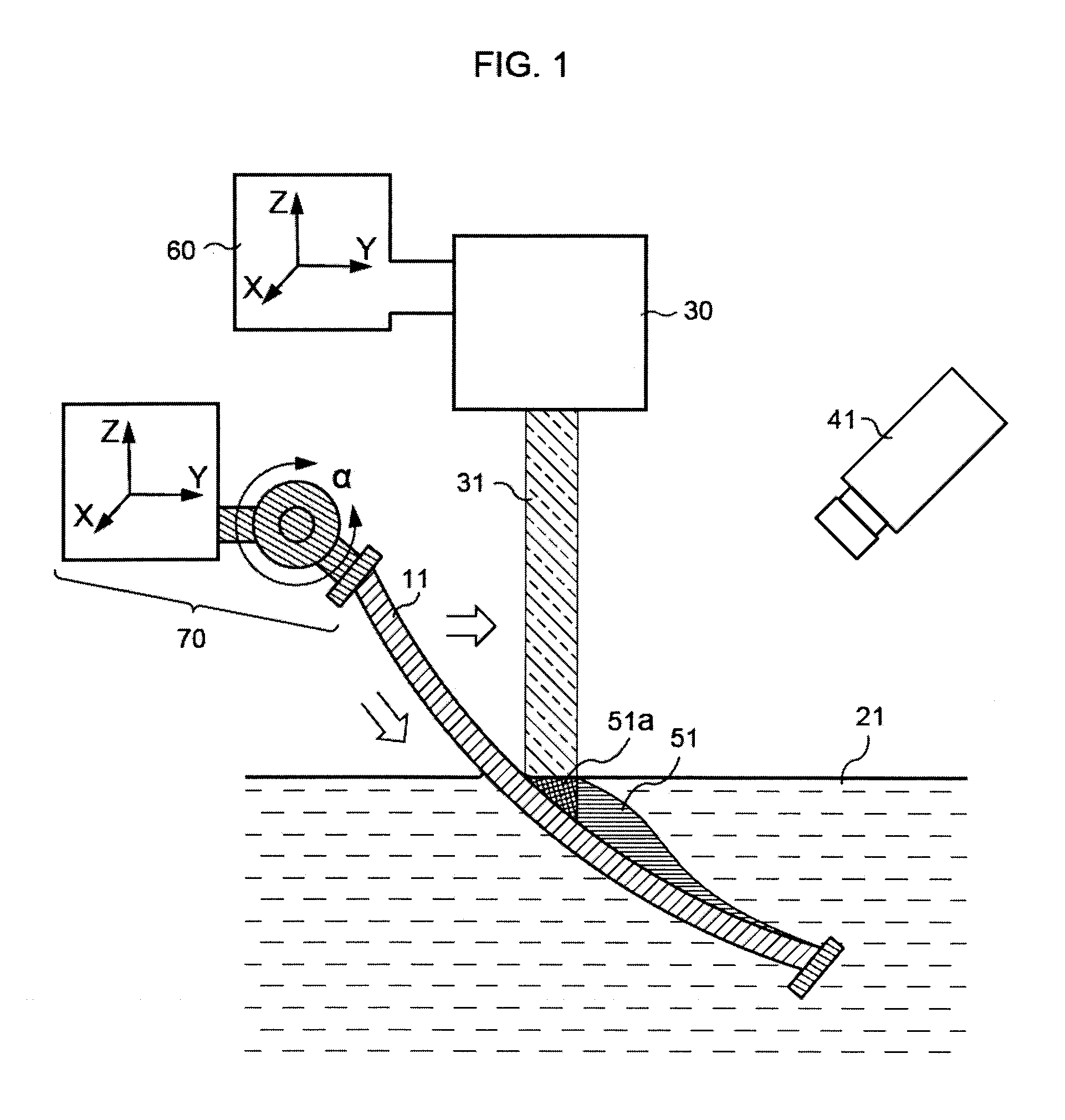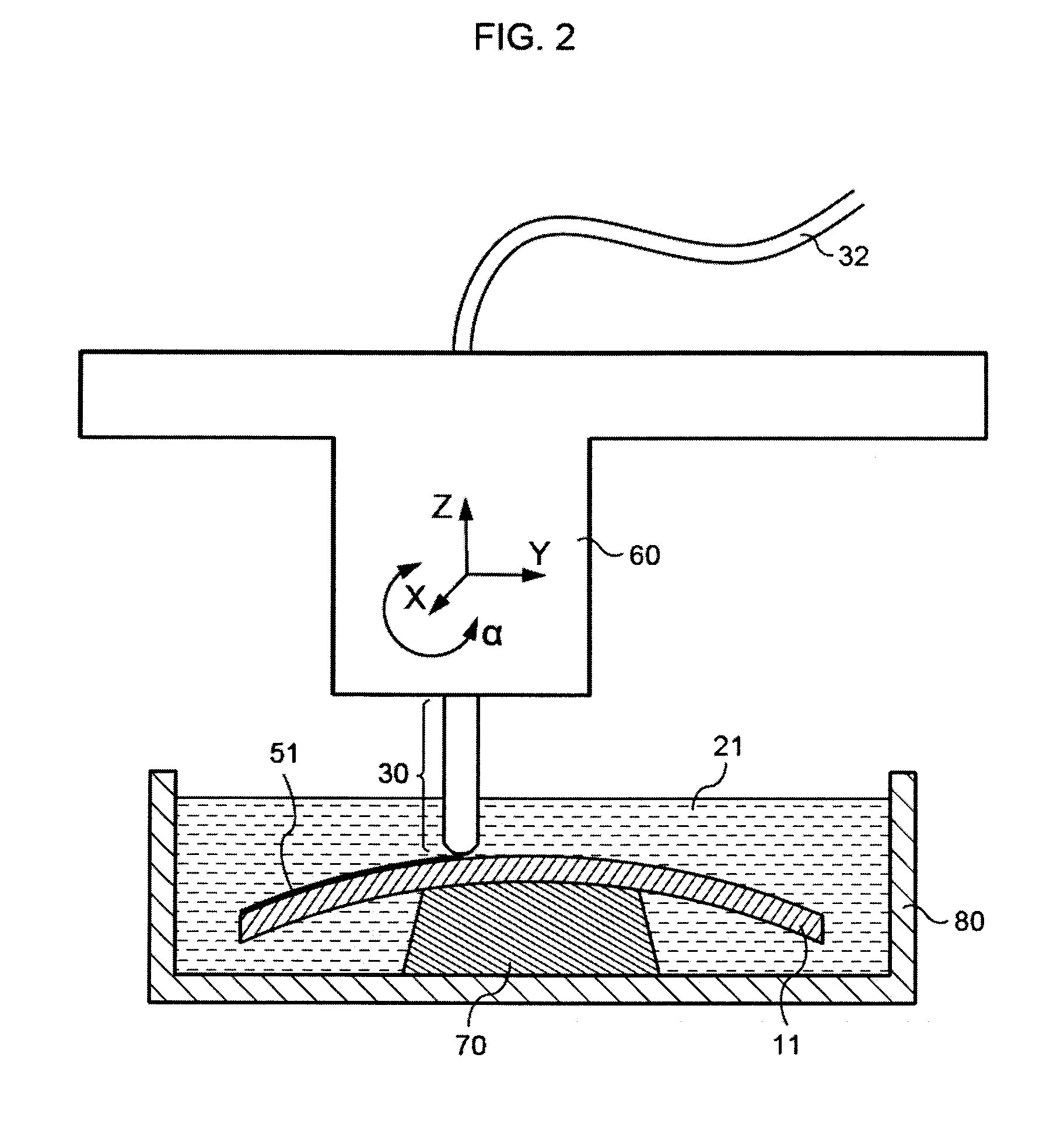Eyewear lens production by additive techniques
- Summary
- Abstract
- Description
- Claims
- Application Information
AI Technical Summary
Benefits of technology
Problems solved by technology
Method used
Image
Examples
example 1
[0145]As illustrated in FIG. 6, a lens substrate 11 is mounted on lens substrate support 70 that allows controlled, fixed positioning of the lens substrate. In this Example, lens substrate support 70 comprises multiple points that contact, support and fixedly position the lens substrate. The convex surface of the lens substrate is further protected by a protective element 90, and support 70 contacts the protective element 90 while supporting the substrate.
[0146]The lens substrate 11 is a finished plano comprising finished and polished concave and convex surfaces. The lens substrate is made from a lens material with a refractive index of 1.5, with radii of curvature on both its convex and concave surfaces of 125 mm, and a minimum thickness of 1.0 mm. The lens substrate has a rectangular shape that is 50 mm wide (along the horizontal axis of the lens as it will be mounted in the frame and worn) and 30 mm in height. The concave surface will be exposed to the flowable radiation-polymeri...
example 2
[0157]In another embodiment, a −2 D 65 mm round hard resin (n=1.50) lens substrate 11 is mounted in a configuration as illustrated in FIG. 1. In this Example, material is intended to be polymerized onto the concave (uppermost as viewed in FIG. 1) surface of the lens substrate to create a +2.00 D add power in an 25 mm round area on the lower portion of the inner surface of the resultant lens as it will be worn in an eyeglass frame. This 25 mm area corresponds to a region near the edge of the lower right-hand portion of the uppermost lens surface in FIG. 1.
[0158]A 365 nm mercury atomic emission lamp with collimating optics is used for irradiating beam 31 to provide a 5 mm circular diameter irradiating beam. A CCD camera 41 is used to view the surface of the lens substrate, the flowable radiation-polymerizable material and the added material on the lens substrate created by the process. The flowable radiation-polymerizable material will provide added polymerized material with a refract...
PUM
| Property | Measurement | Unit |
|---|---|---|
| Angle | aaaaa | aaaaa |
| Electrical conductivity | aaaaa | aaaaa |
| Color | aaaaa | aaaaa |
Abstract
Description
Claims
Application Information
 Login to View More
Login to View More - R&D
- Intellectual Property
- Life Sciences
- Materials
- Tech Scout
- Unparalleled Data Quality
- Higher Quality Content
- 60% Fewer Hallucinations
Browse by: Latest US Patents, China's latest patents, Technical Efficacy Thesaurus, Application Domain, Technology Topic, Popular Technical Reports.
© 2025 PatSnap. All rights reserved.Legal|Privacy policy|Modern Slavery Act Transparency Statement|Sitemap|About US| Contact US: help@patsnap.com



